Wow, these tours were a long time ago. I’m finally getting around to writing this post in November, but we took these tours April 10 and 30. Still, they are worth remembering and sharing, so I’m going to do my best to try to recreate the experience.
Sacred Valley Tour
Our Airbnb host booked this group tour for us and picked us up early in the morning to take us by taxi to the Plaza Mayor to meet the tour. There was a fair bit of waiting around while we waited for the other participants to assemble. Finally we boarded a bus to depart for the Sacred Valley.
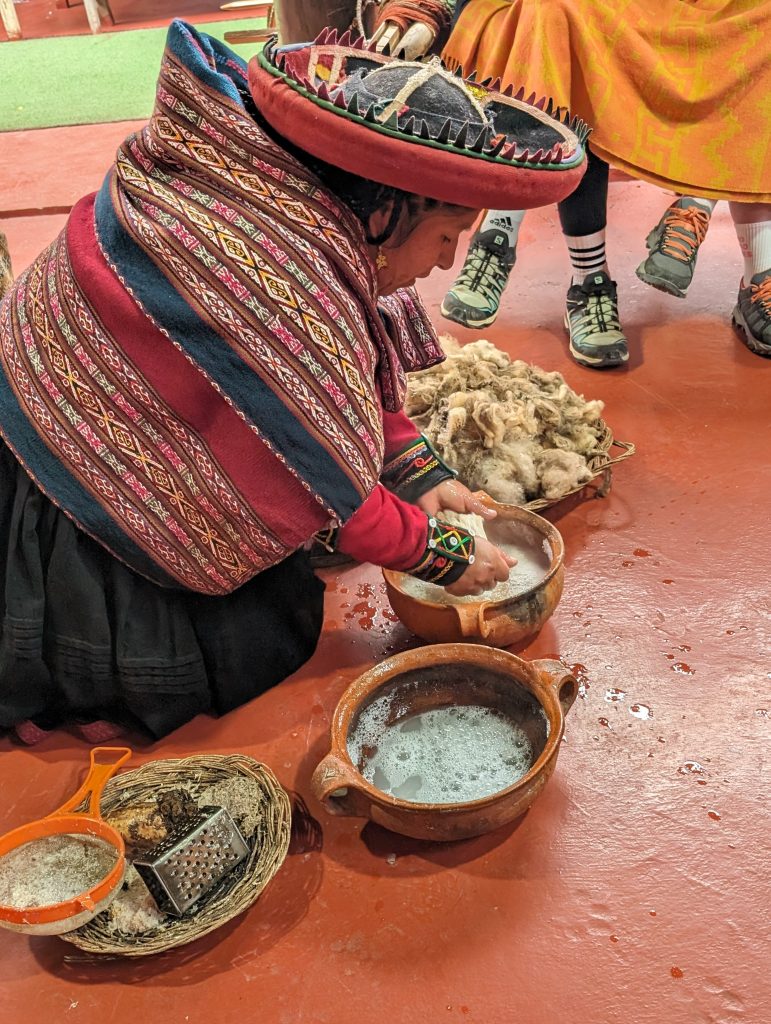
However, our first stop was at a tourist trap not far from Chinchero. Here we were given an interesting demonstration about traditional wool dyeing methods, and strongly encouraged to buy some of the alpaca products. The demonstration was interesting and it was good to get a bathroom break there but it made us wish we had opted for a private tour instead.
Our first real stop was Chinchero, which was quite charming and beautiful. Chinchero is still a little town (though mostly for tourists) with remnants of a temple that was converted to a church and a large ceremonial space with Inca terraces. It was incredibly picturesque and our tour guide did a great job explaining how the Spanish Christians co-opted Inca sites and symbols as part of the forced conversion. Mostly though we found it to be stunningly beautiful.

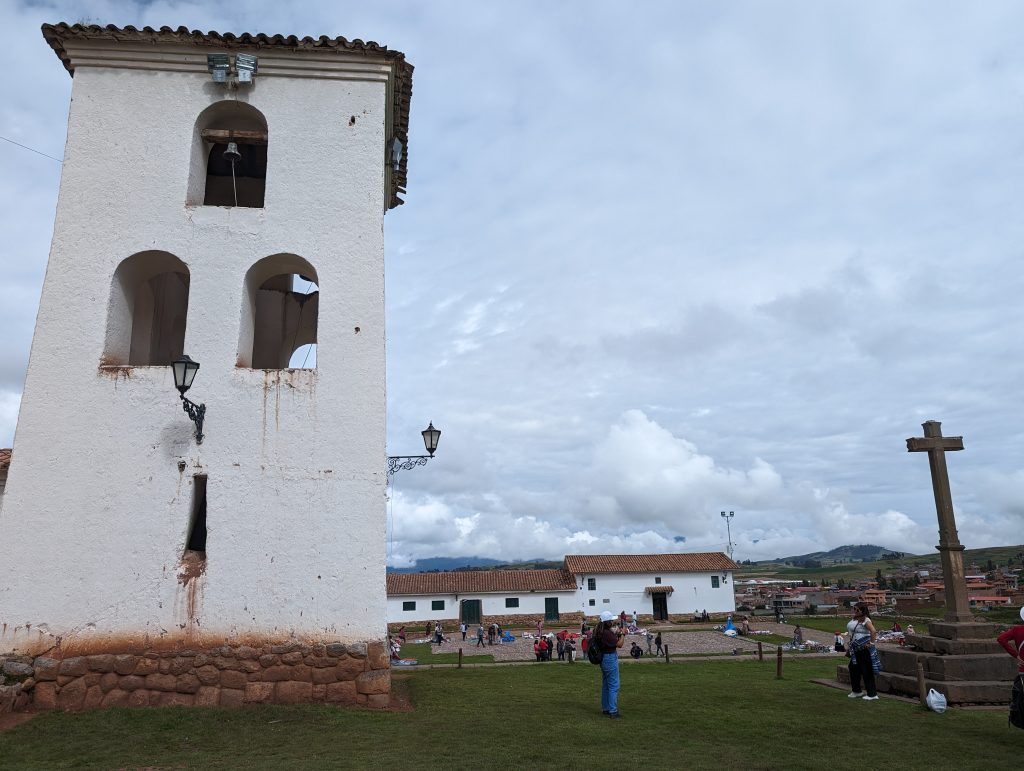
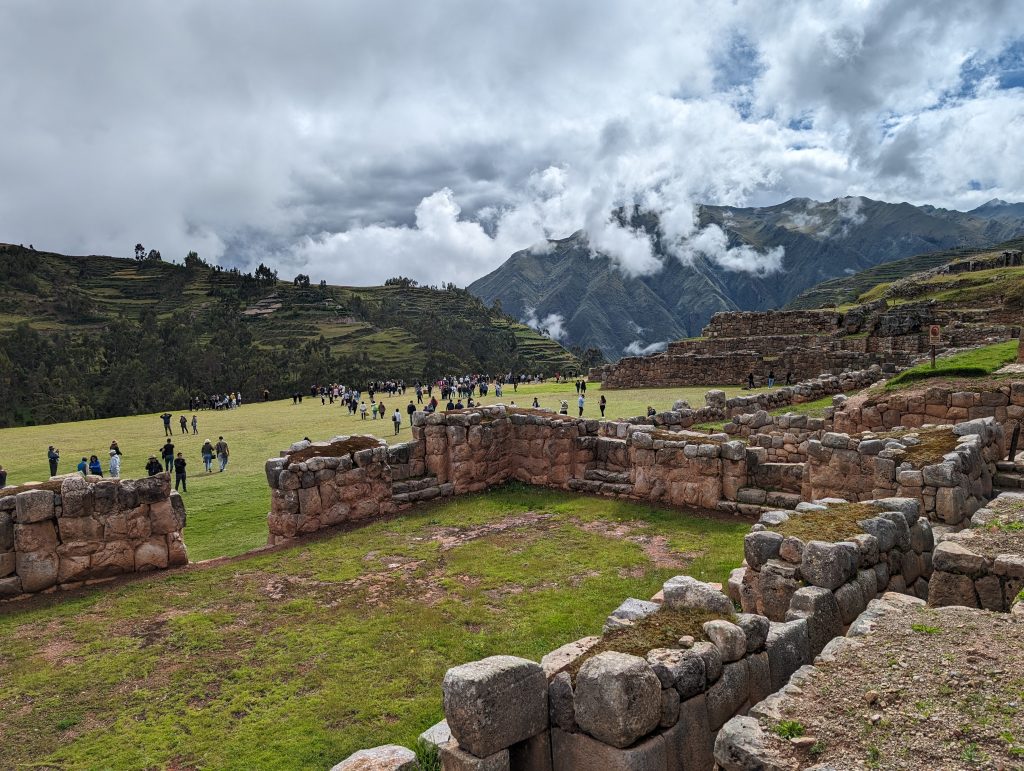
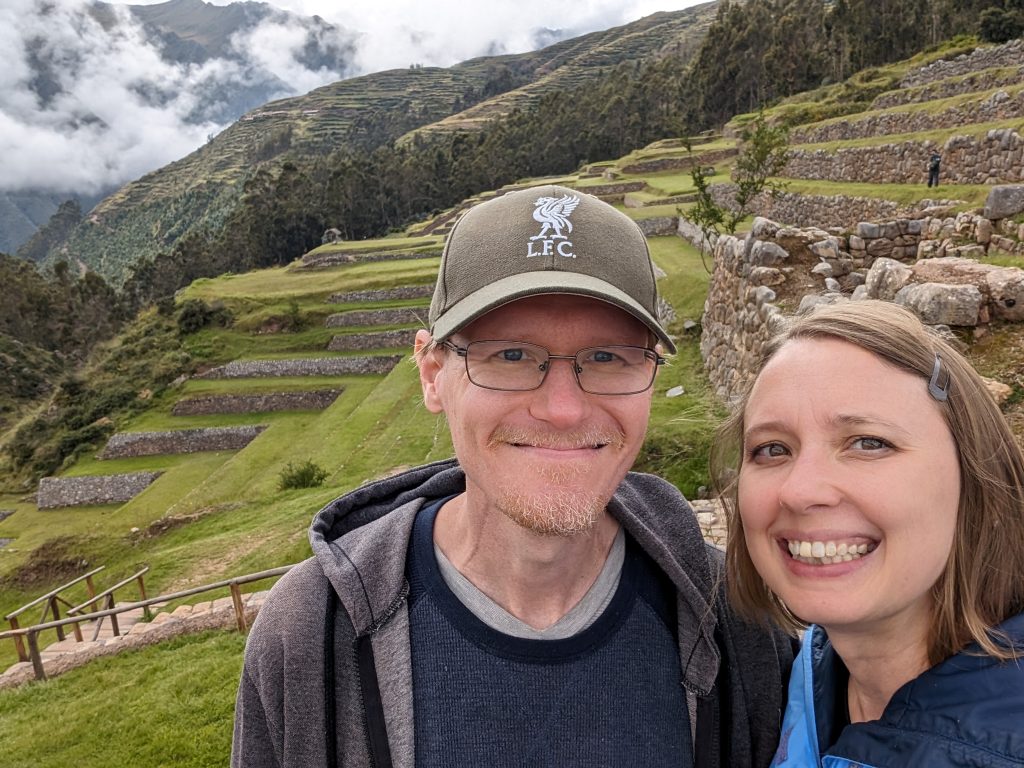

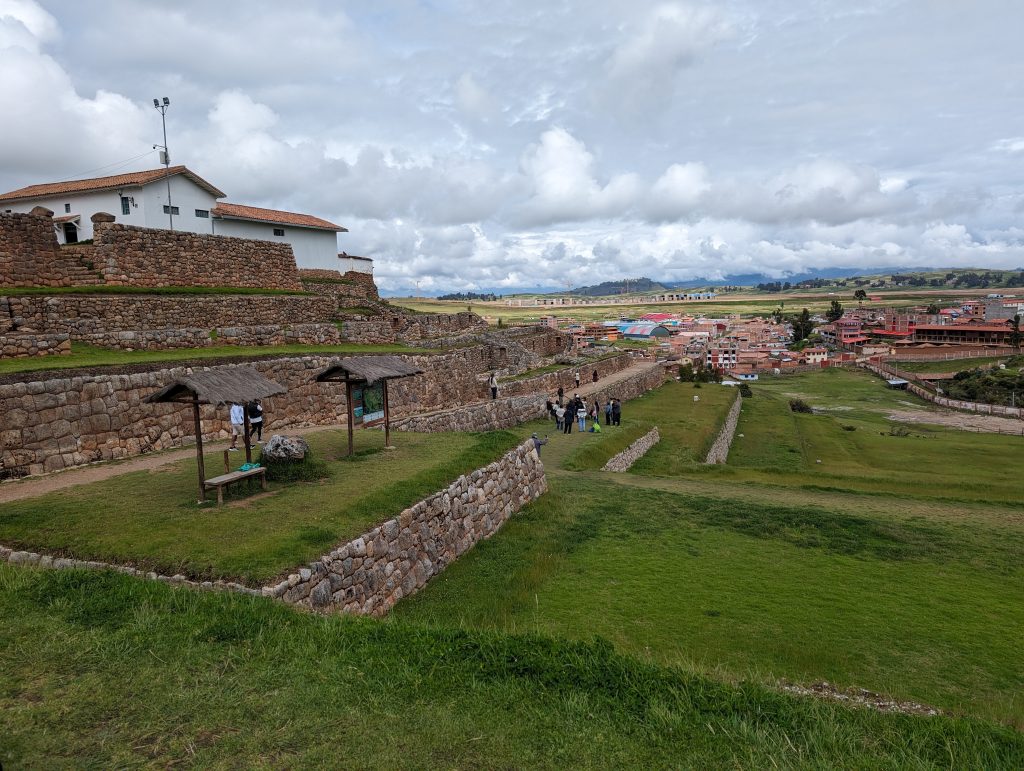
Next we were taken to the Maras Salt Mines, where we saw the salt ponds that have been in use for centuries and the many bags of salt they produced. The statistic they shared was that each pond could produce 300 pounds of salt during the dry months. It was an incredible operation to see and also quite picturesque.
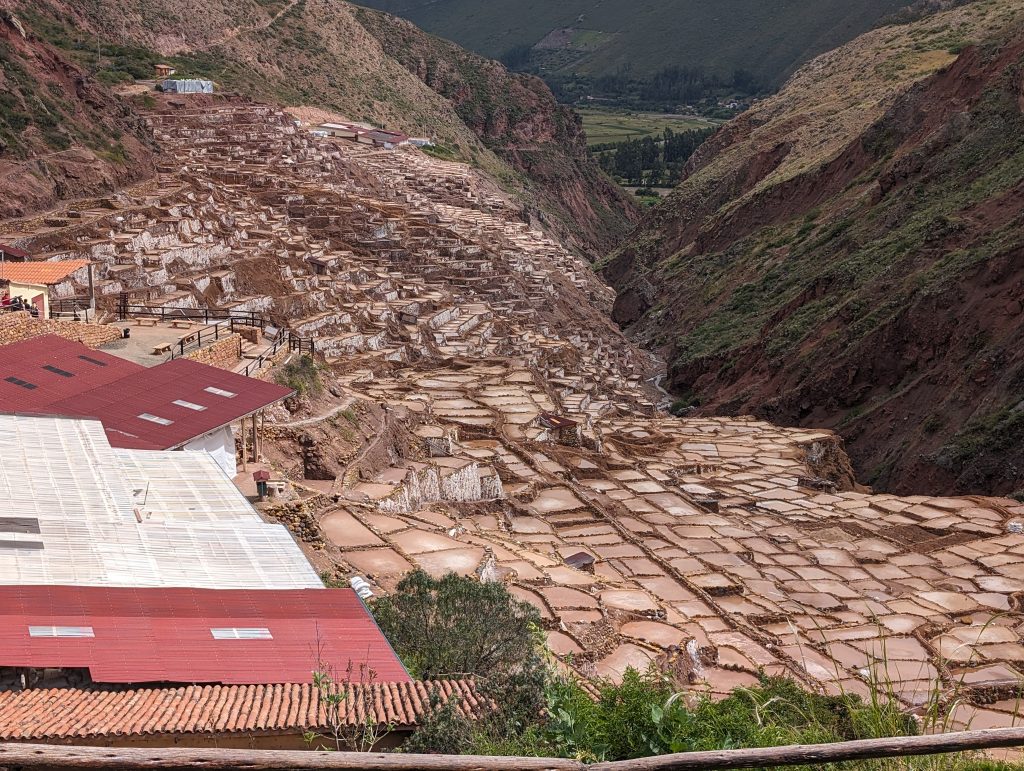
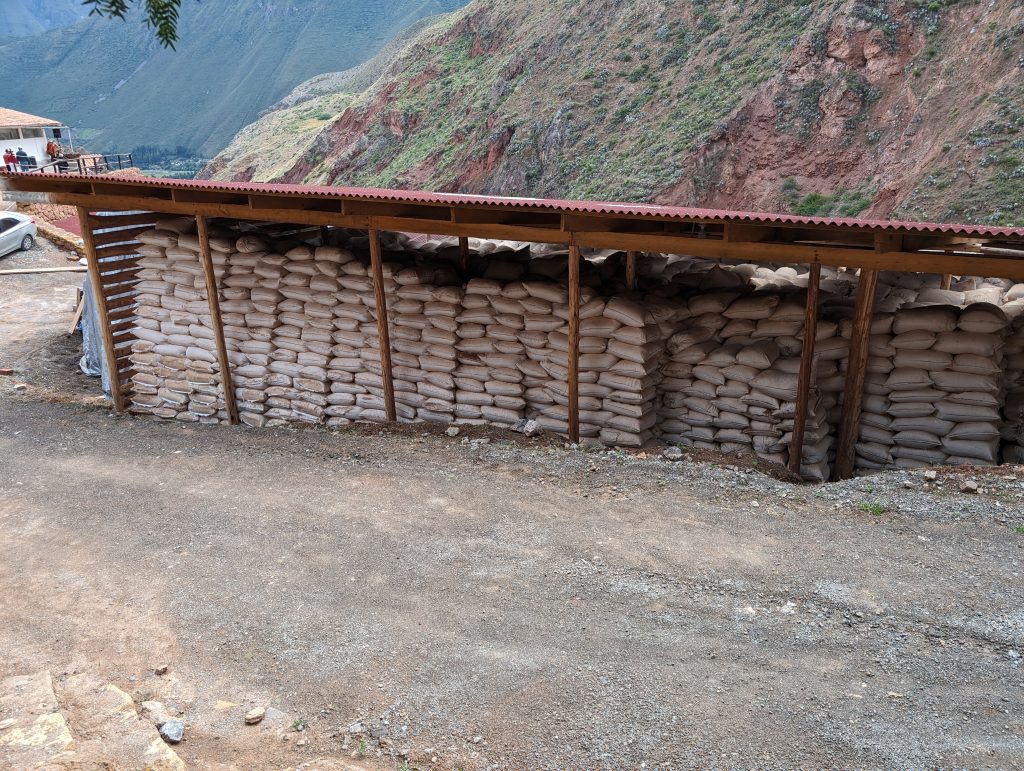
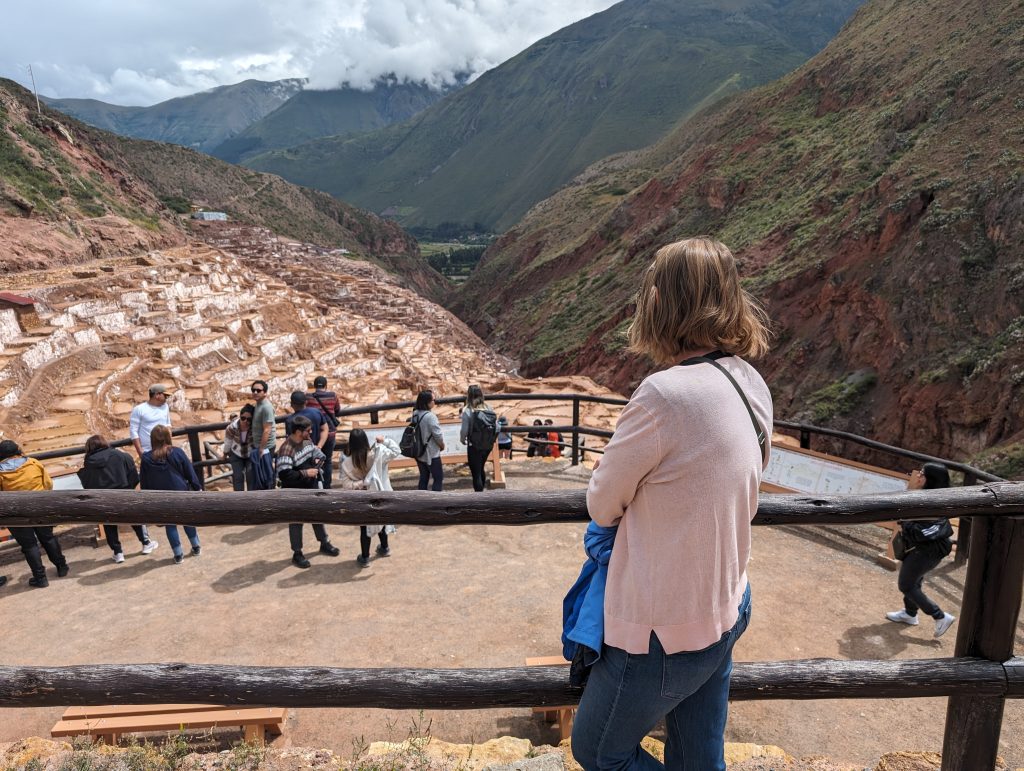
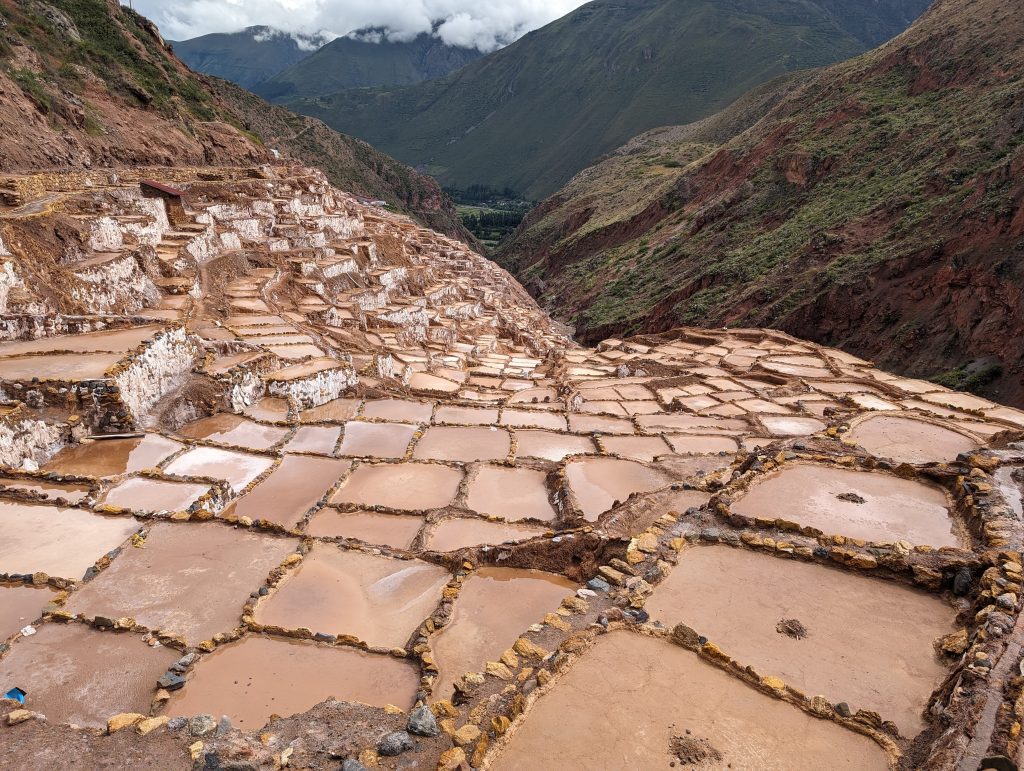
Then we went to Moray, an Inca ruin where they apparently conducted agricultural experiments because of a quirk in the landscape that made the temperature vary between terraces. Moray was also very beautiful. With a lot of hustle, we were able to walk around the circular terraces in the short time we were given for our Moray stop.


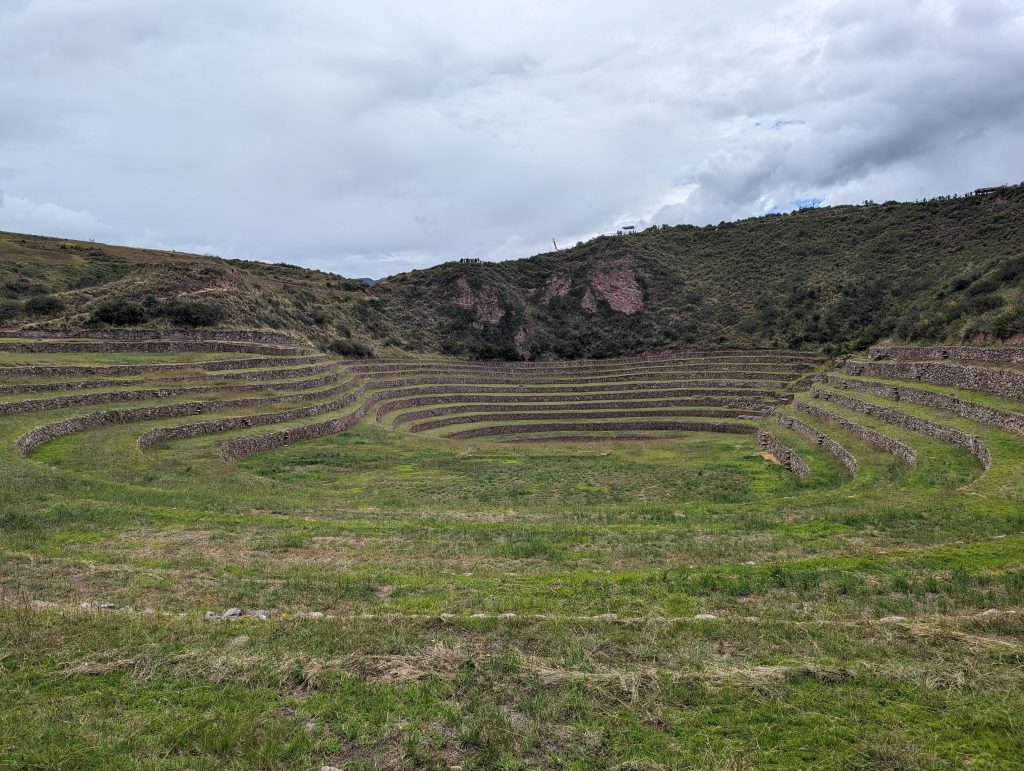
After Moray, we went to Ollantaytambo, though we must have had a lunch stop first, which I don’t remember but I’m sure was one of the typical Peruvian tourist buffets. I didn’t bother taking any lunch photos, though I believe this was the one with the outdoor seating, which was nice.
The Ollantaytambo archeological site is built into a high hill, so we climbed up many steps. The guide did a nice job explaining how the Inca moved the impressive rocks and many of the features of the ruins. Ollantaytambo was at the crossroads of three important Inca areas: Cusco, Machu Picchu, and the rainforest, so it was a key administrative center. And with all the climbing we did, of course the views were beautiful.
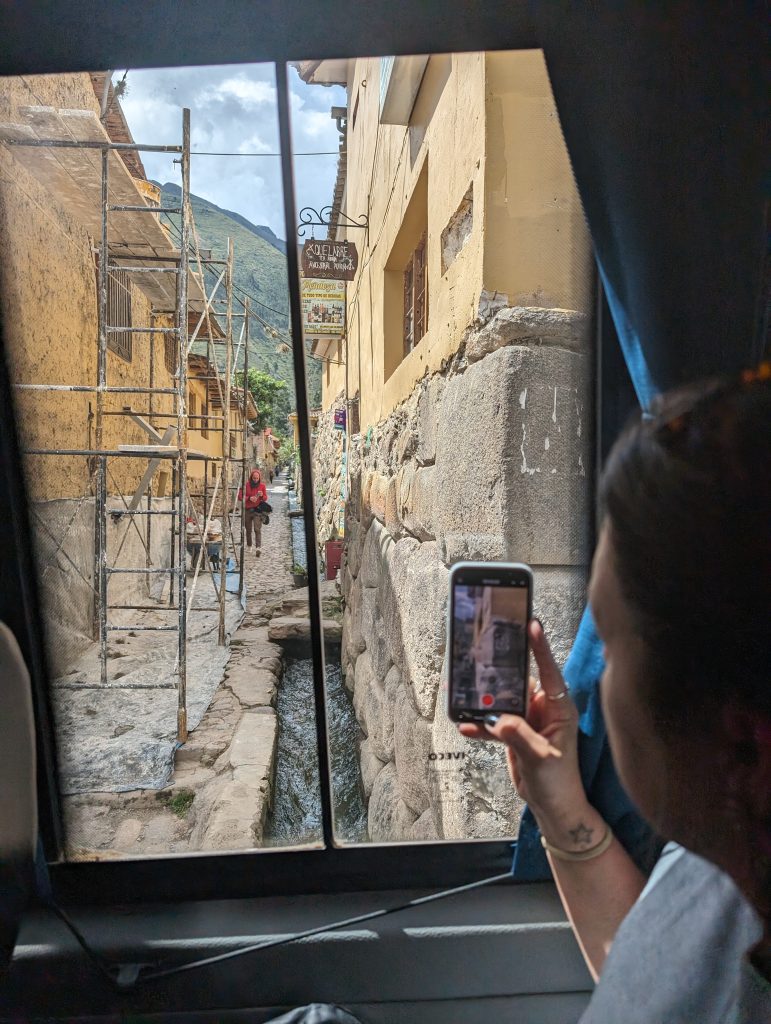
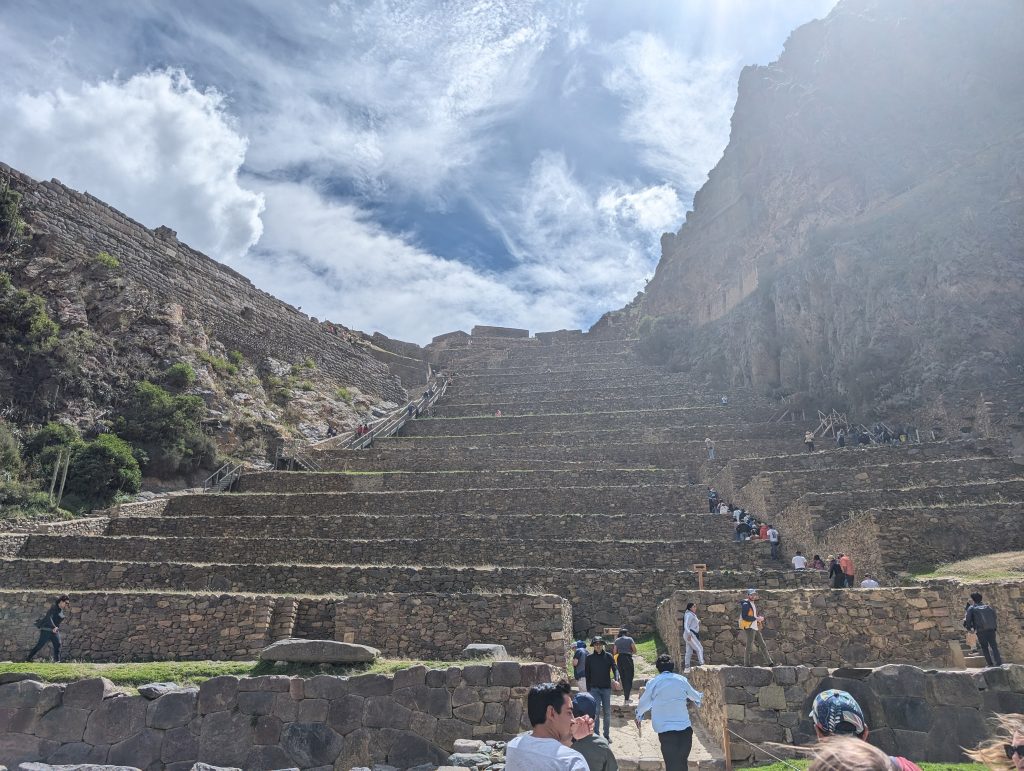
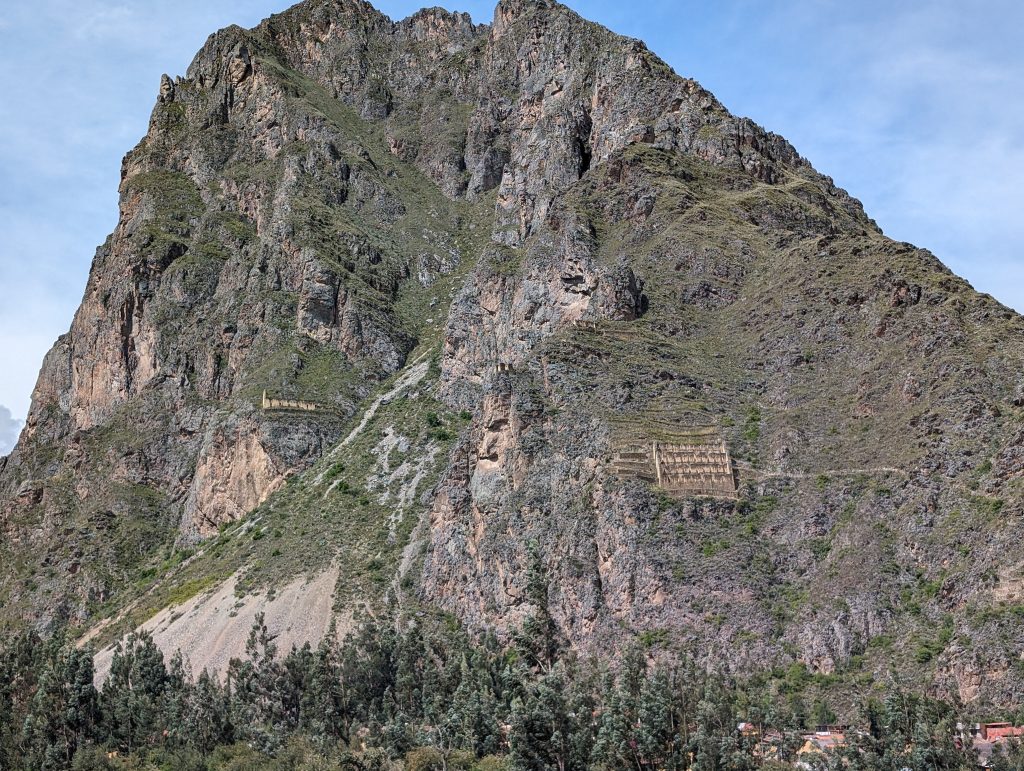

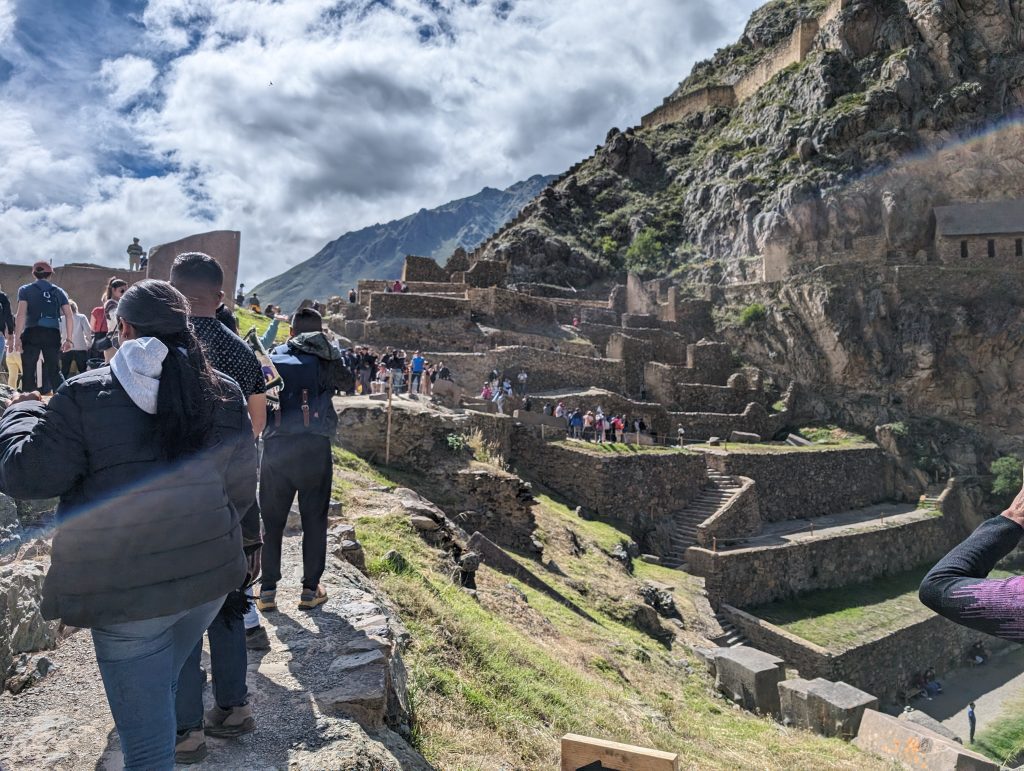
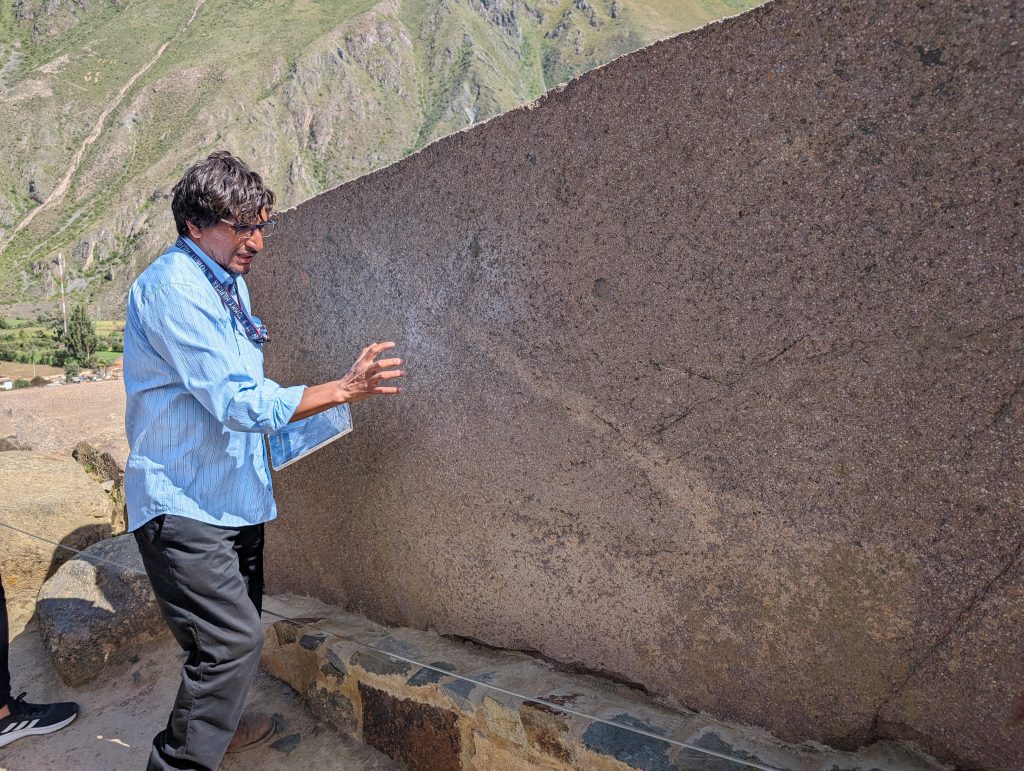

Our final stop was Pisac, the ruins of an Inca village that was also picturesque and fascinating. I don’t remember a lot of the details, but our photos are sure nice!
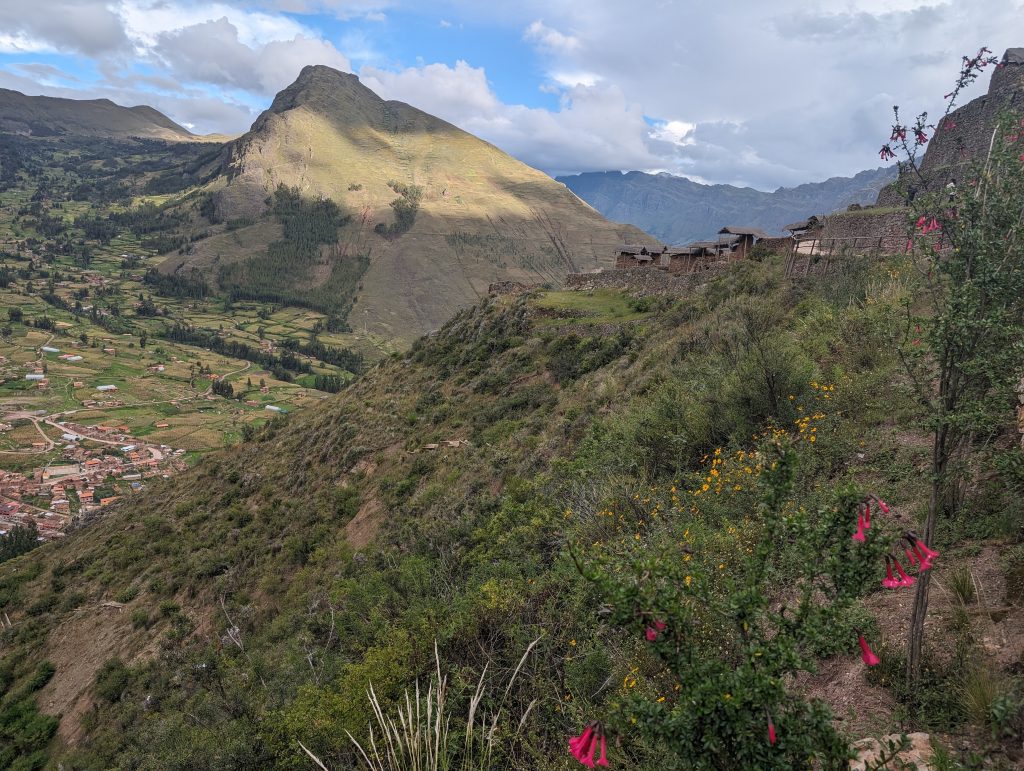
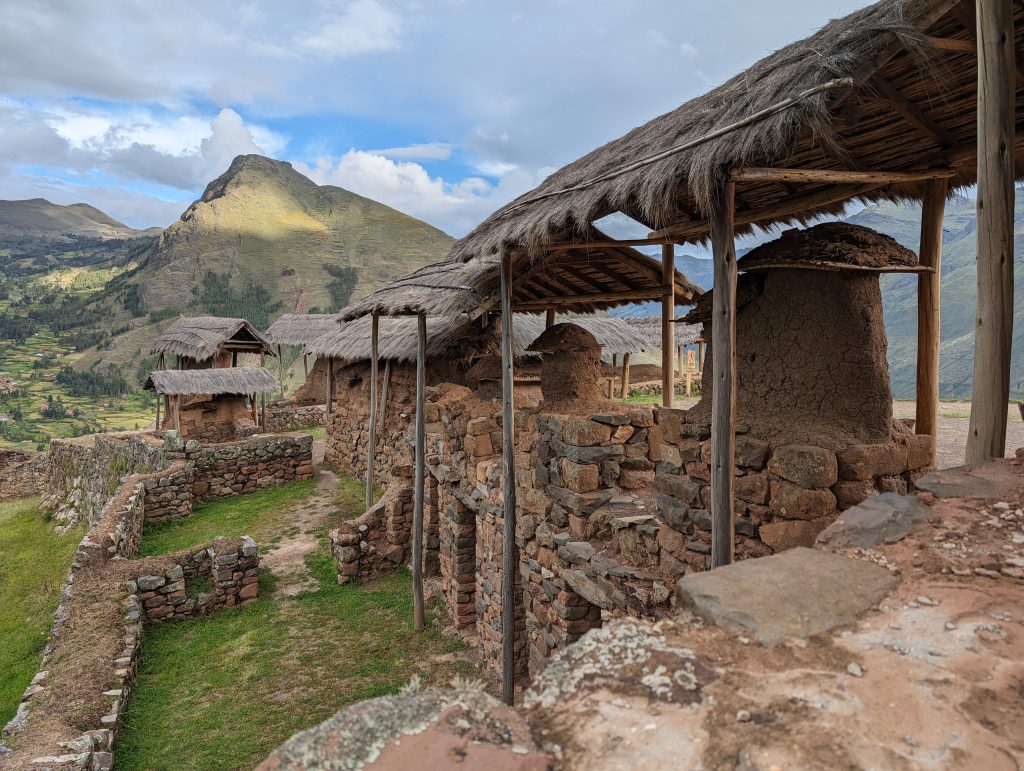
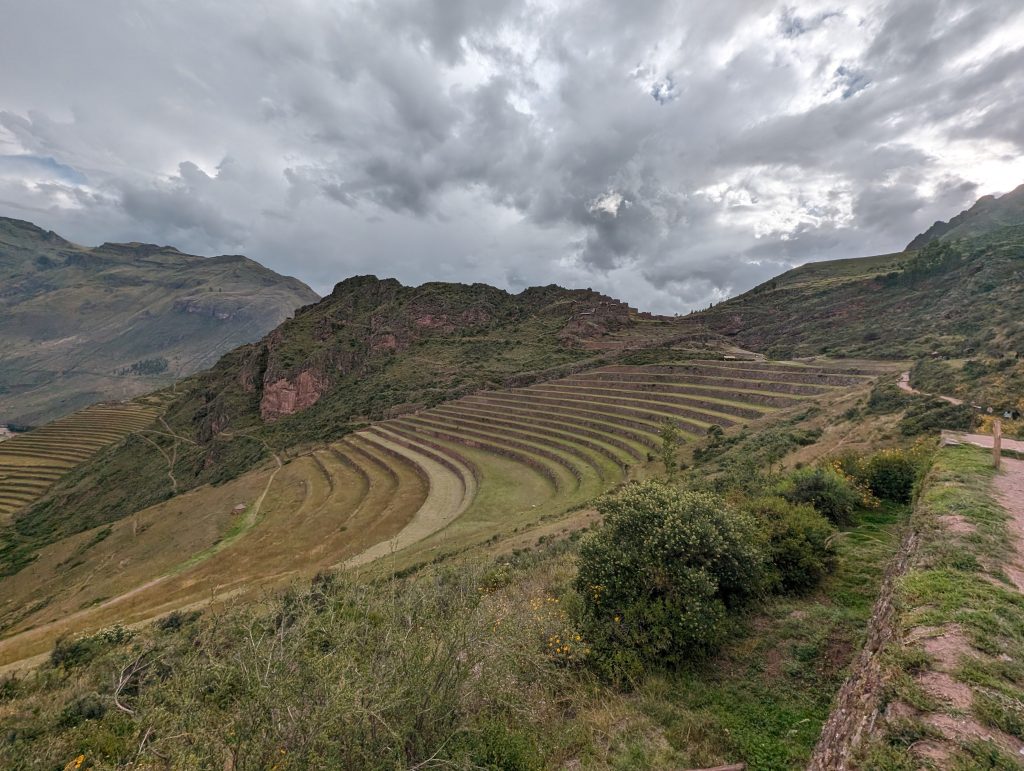


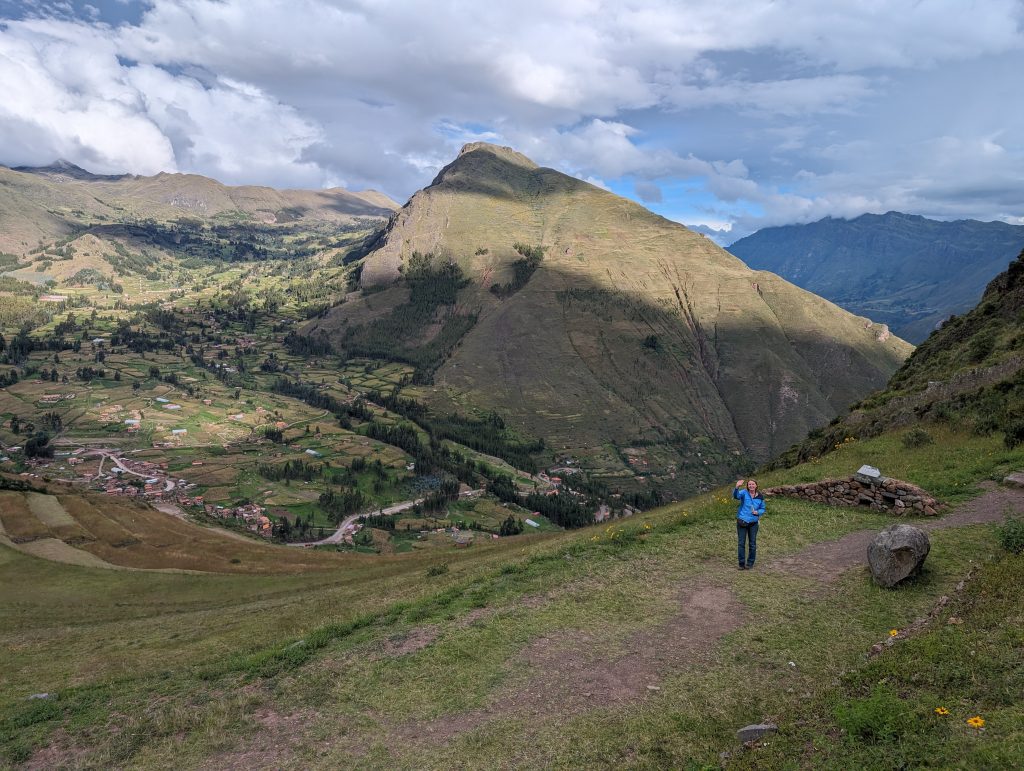
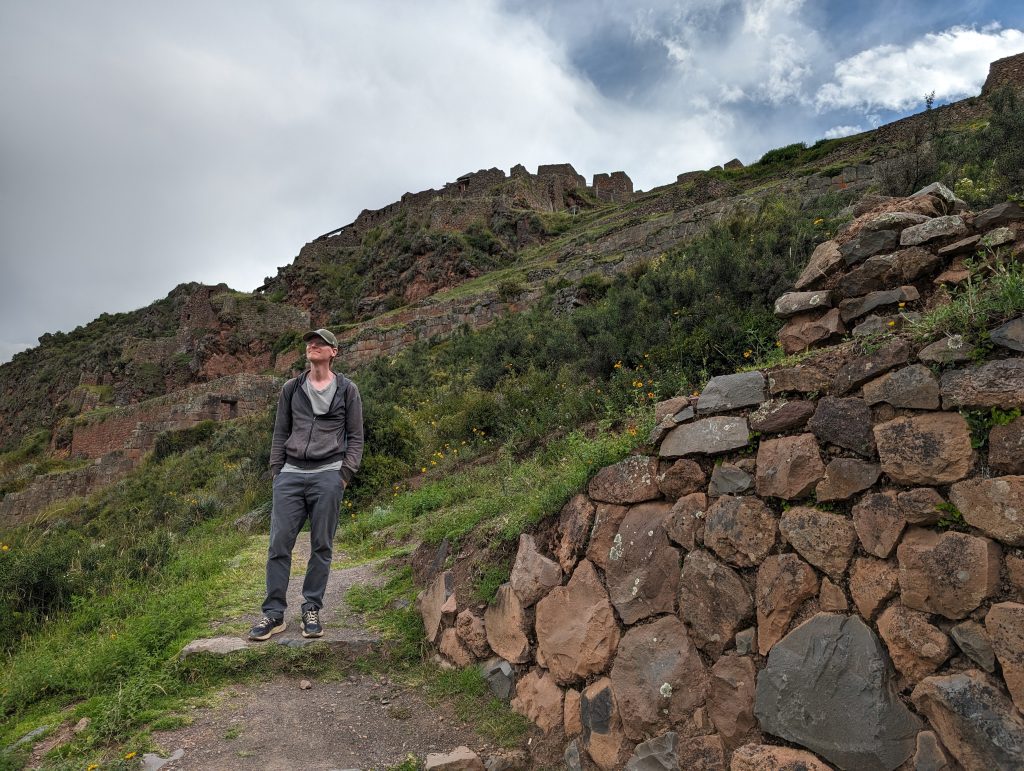

The Sacred Valley tour was a long day but definitely worth it. Oh, and most of the sites we visited were covered by our Boleto Turistico that I mentioned in my Cusco post, so we made sure to schedule this tour during our 10-day period with that ticket.
Rainbow Mountain Tour
Our Airbnb host also helped us book this tour, and this one we decided to do a private tour to save time by avoiding the tourist-trap stops and in the hope of getting a jump on the crowds that are always present at the Rainbow Mountain. We had a little miscommunication with our host assuming we’d want a later start than the group tours when what we really hoped was to get out ahead, but we worked it out and were picked up promptly by our guide and driver at 4 a.m.
It’s about a 3 hour drive to the Rainbow Mountain, but we enjoyed chatting with the guide about Peruvian culture and various experiences. Though the tour was supposed to include breakfast, we wanted to keep a move on and so we made just a small stop at a little store about half-way where we were able to pay a small fee to use the restroom. There were also decent restrooms available when we arrived at the Rainbow Mountain. There were already a few cars and vans in the parking lot but not tons and tons, so we definitely succeeded in beating the crowds.
It was a long walk at altitude up the Rainbow Mountain so I needed frequent stops and lots of water. But we made it and it really was uniquely beautiful. By the time we walked up there were plenty of people at the top who had done horseback or ATV, but I’m glad we walked because the scenery was really lovely the whole way.
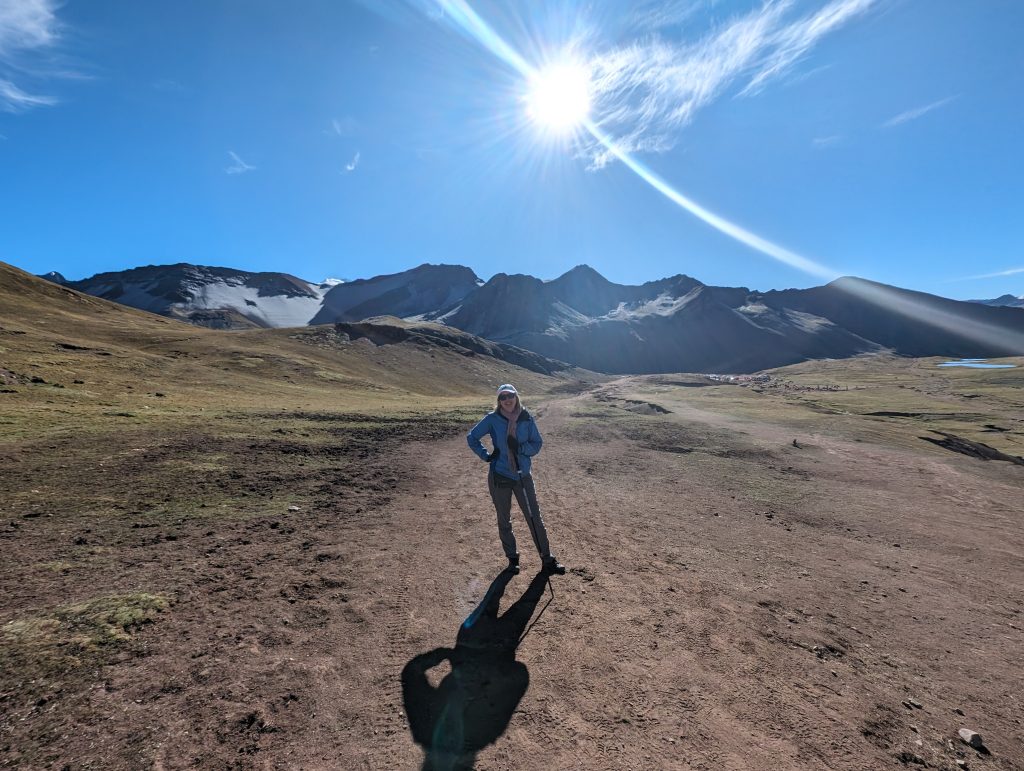


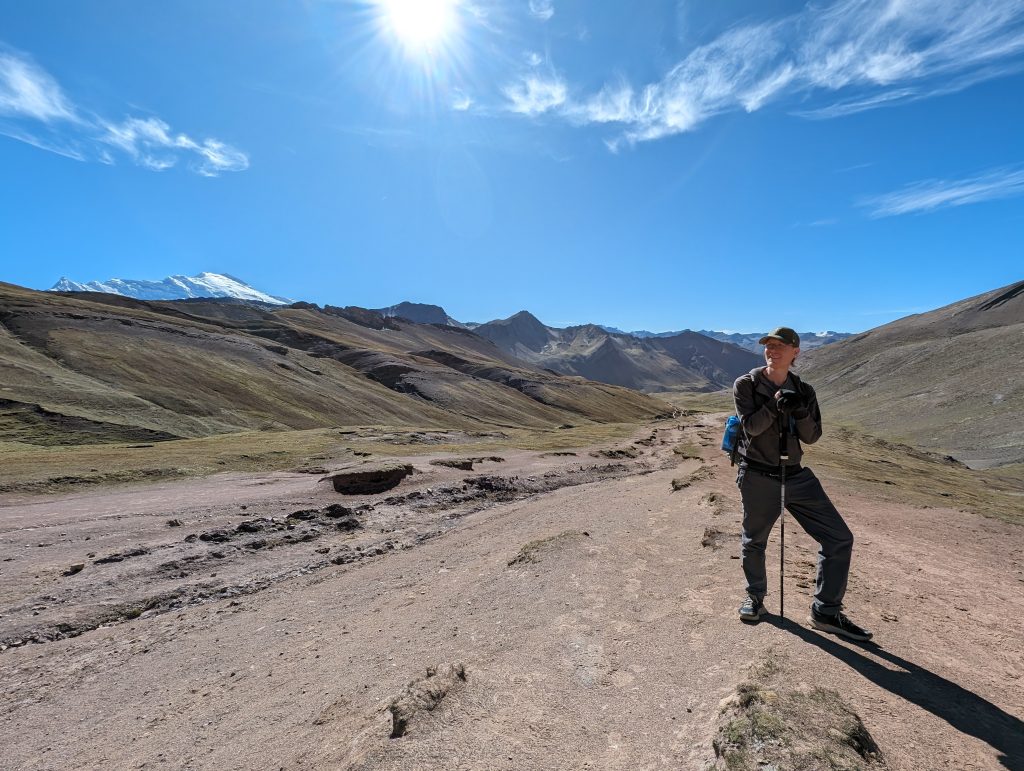

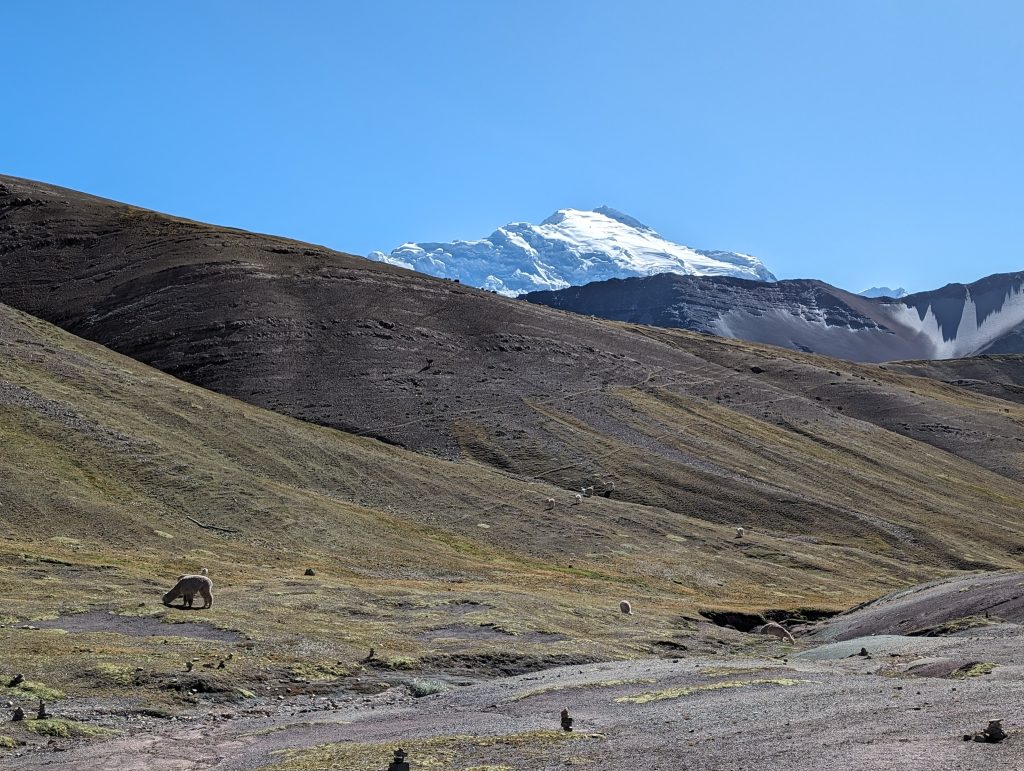

When we reached the top, it was obvious why the Rainbow Mountain has its name and why it is such a popular tourist destination. It was really beautiful. We took so many nice photos at the top of the mountain that I’m just going to include some favorites, especially showing off the stratified colors. No filters!

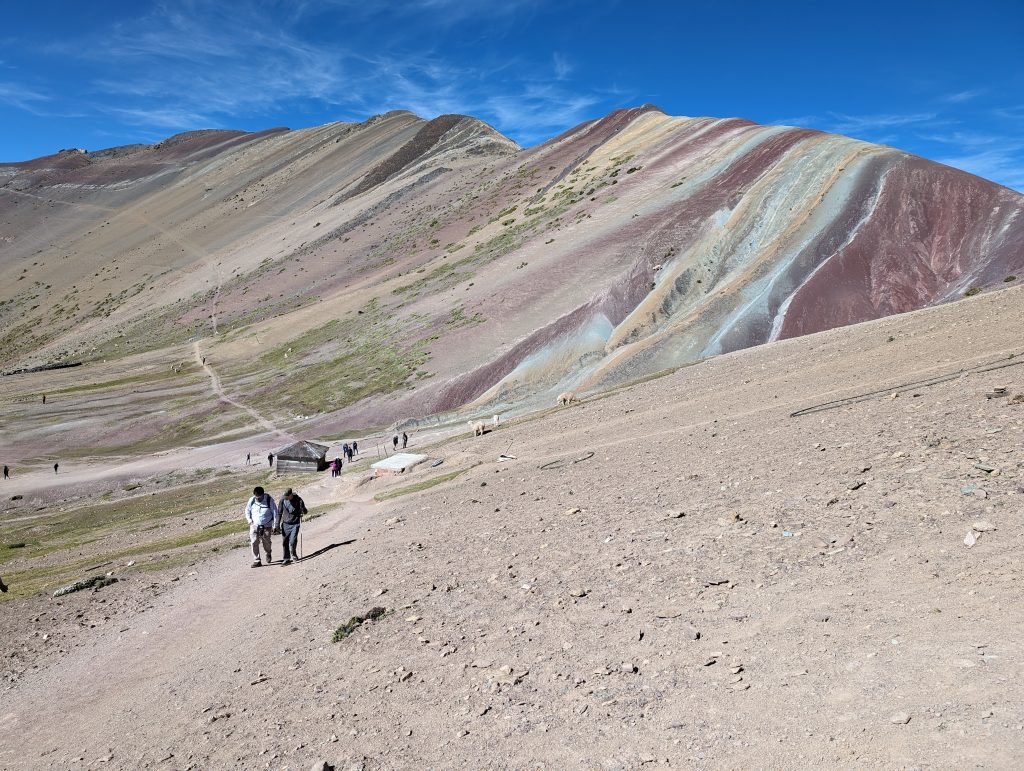
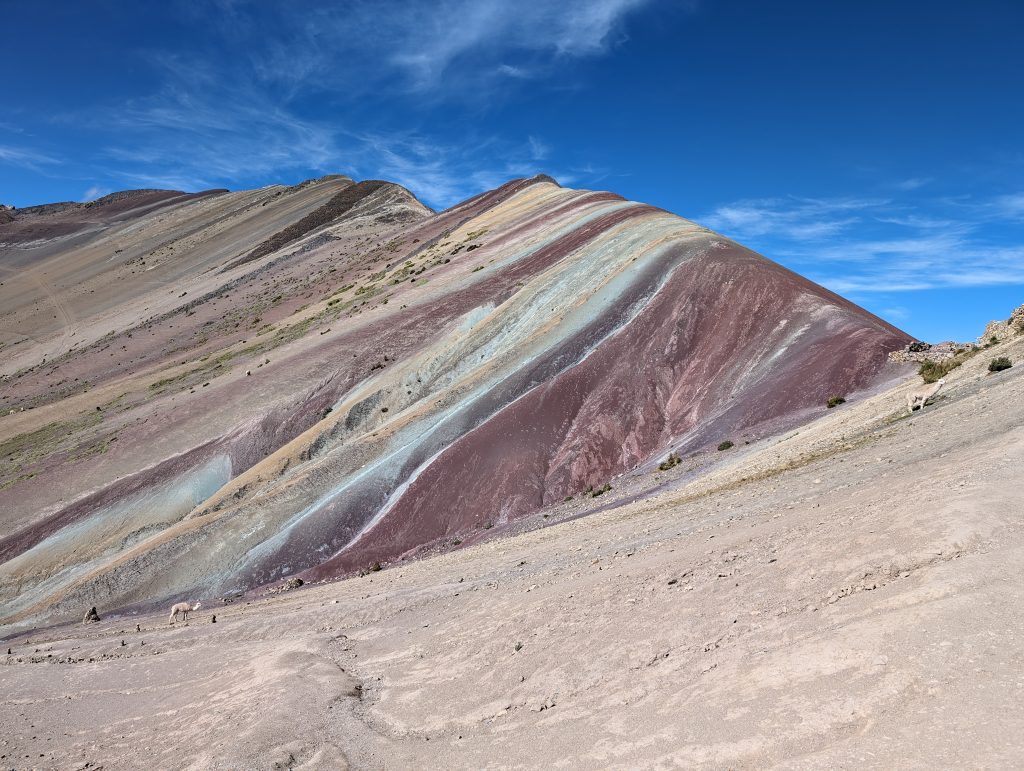

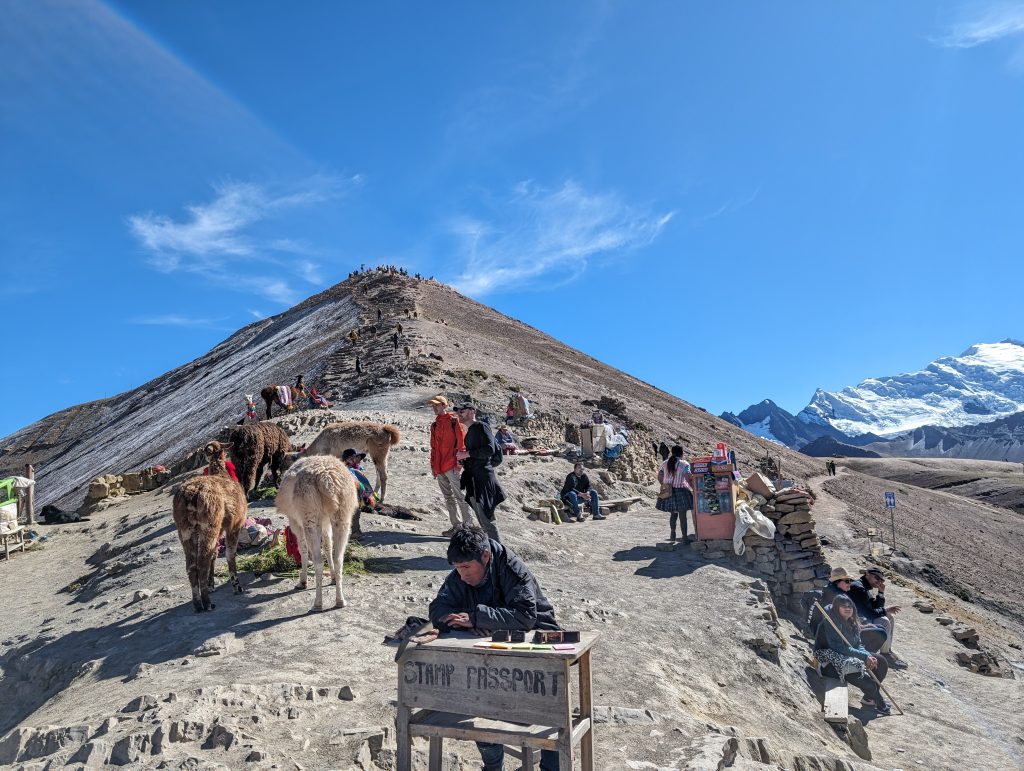
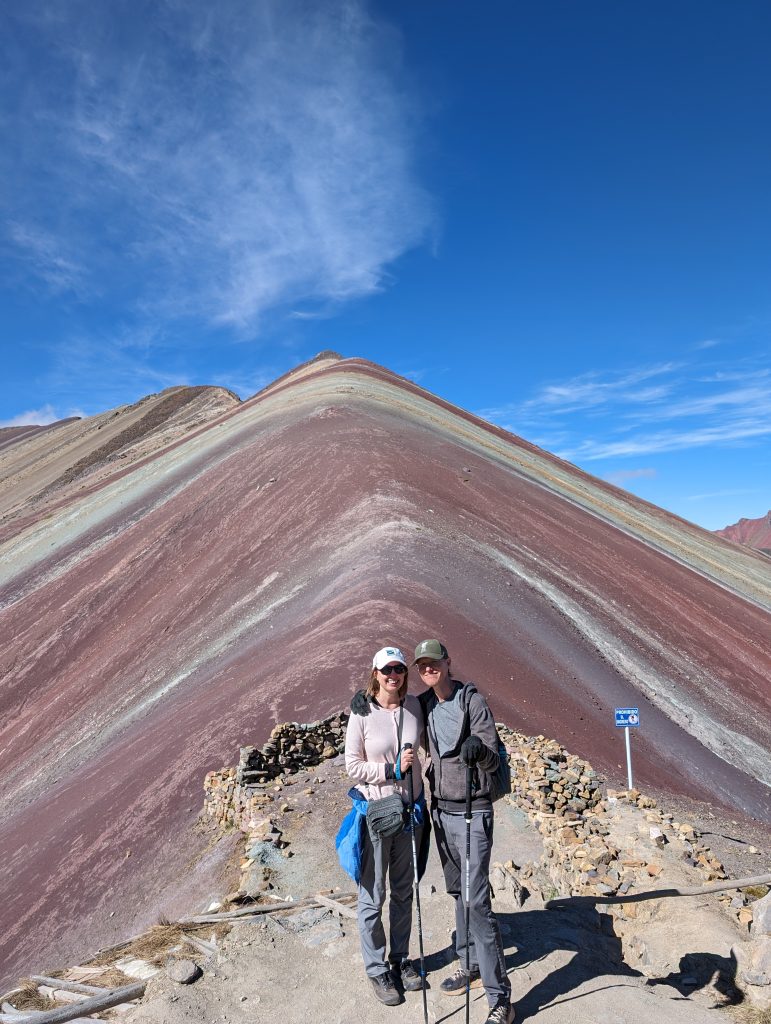
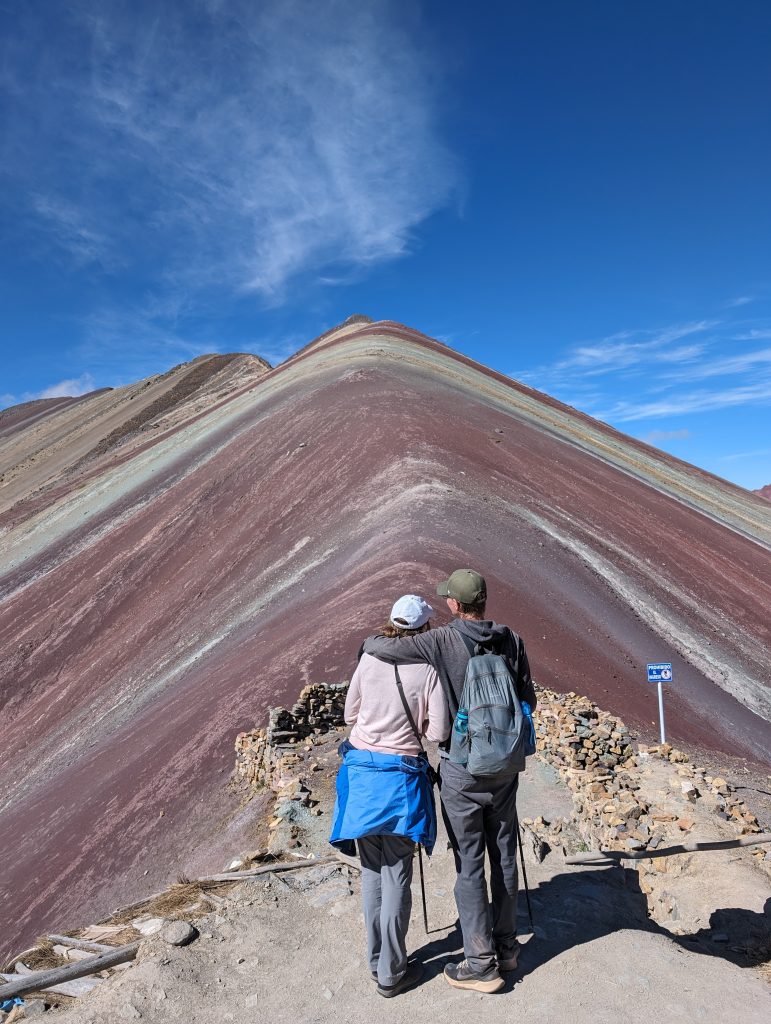
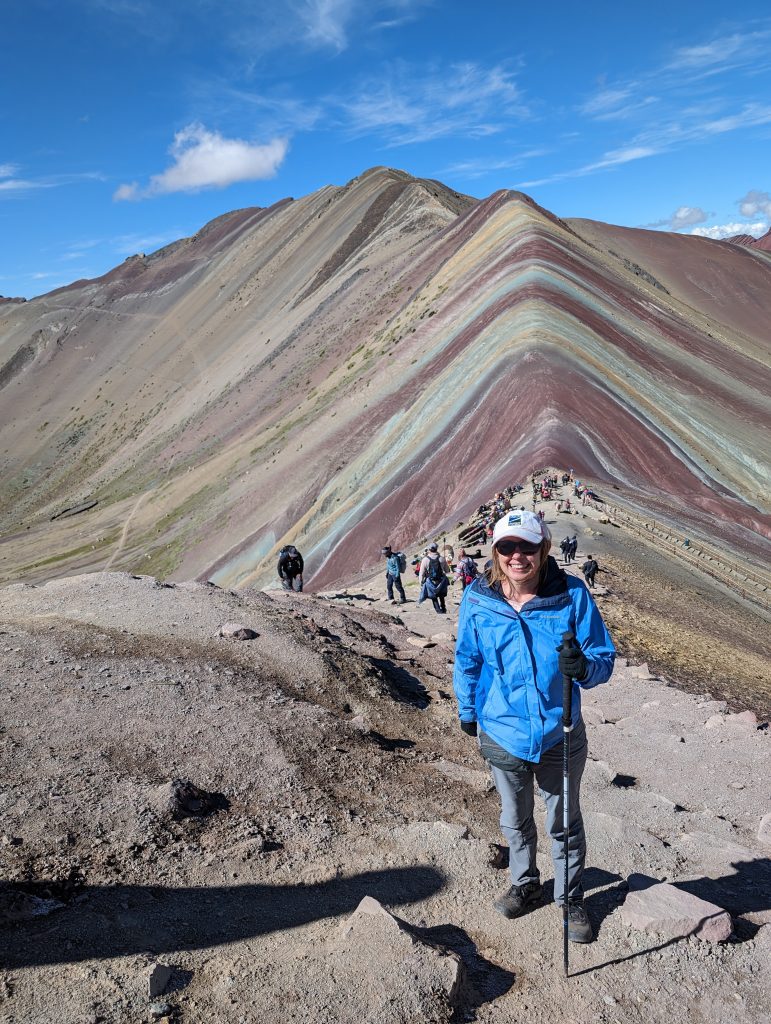
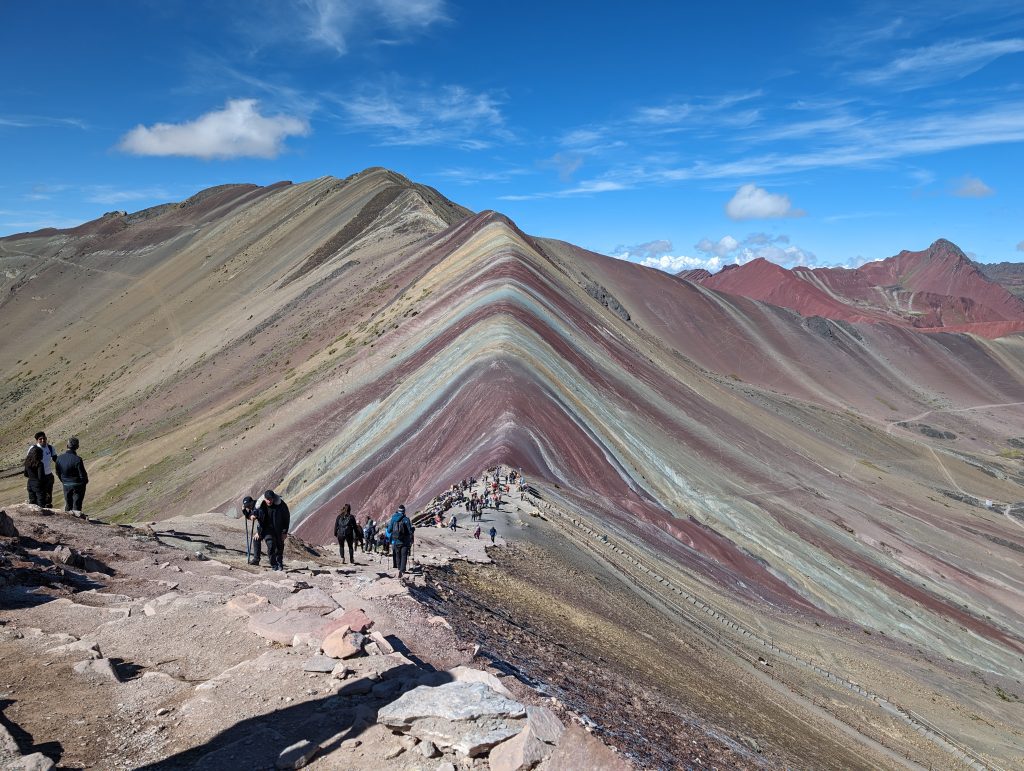
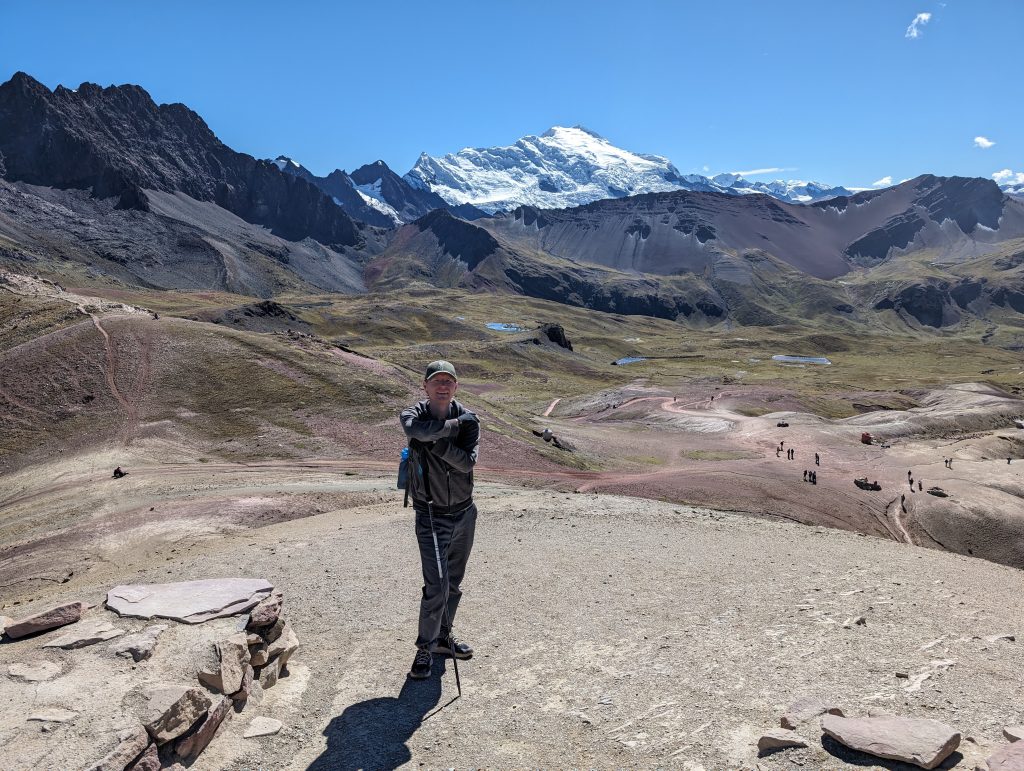
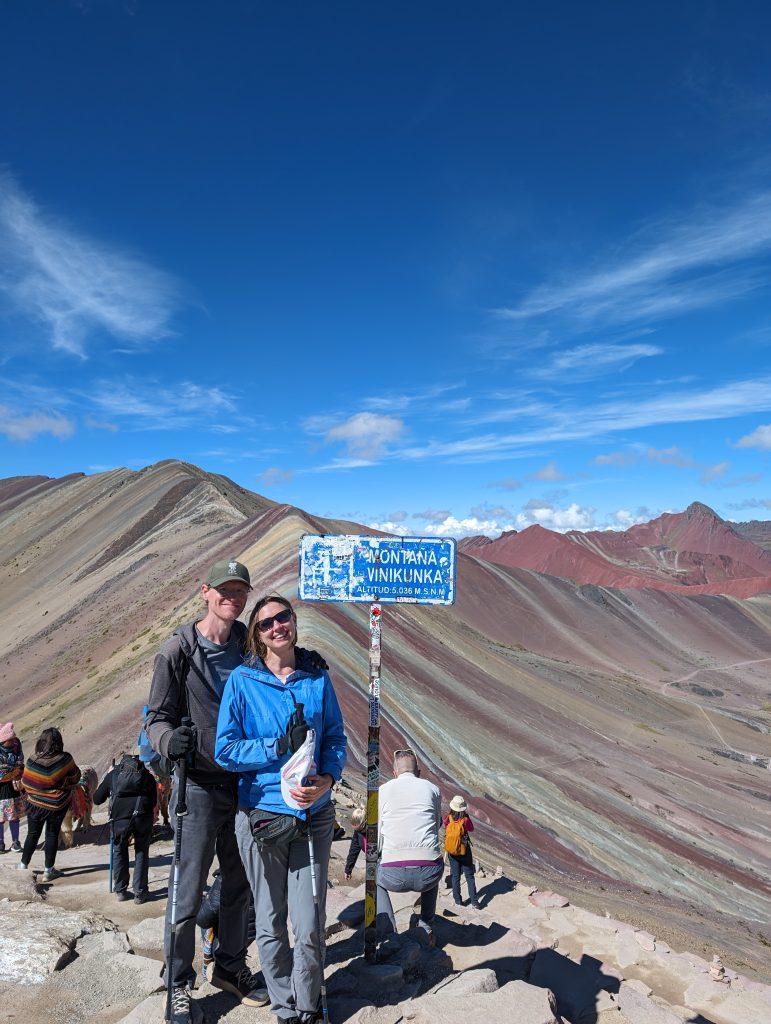


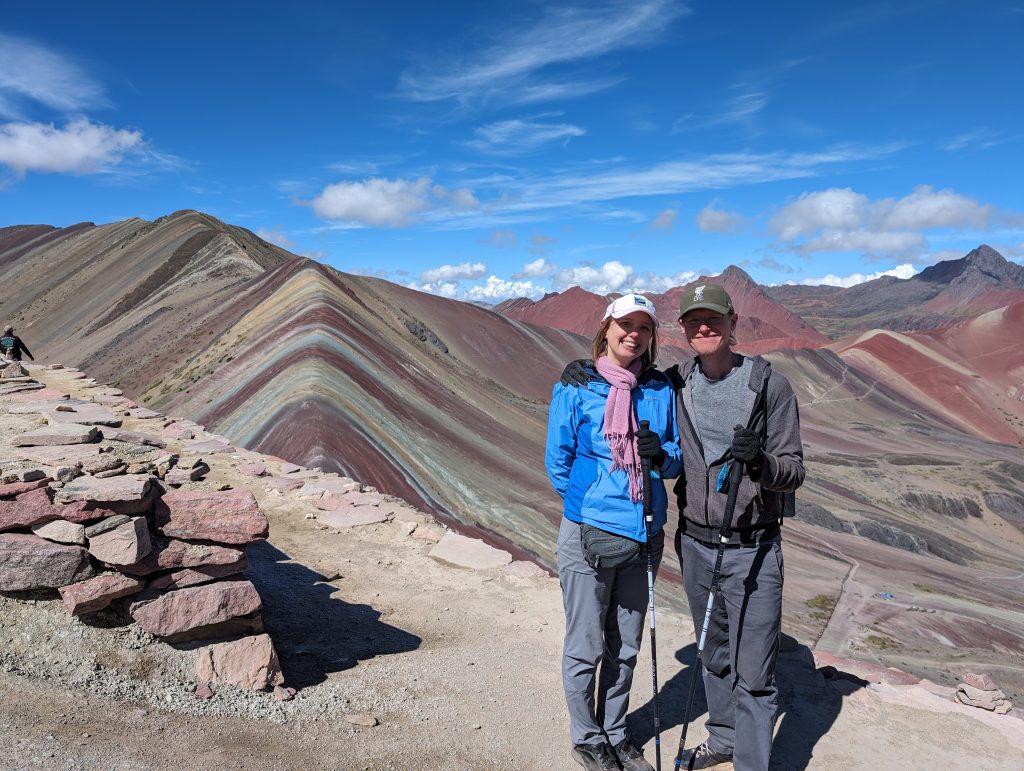

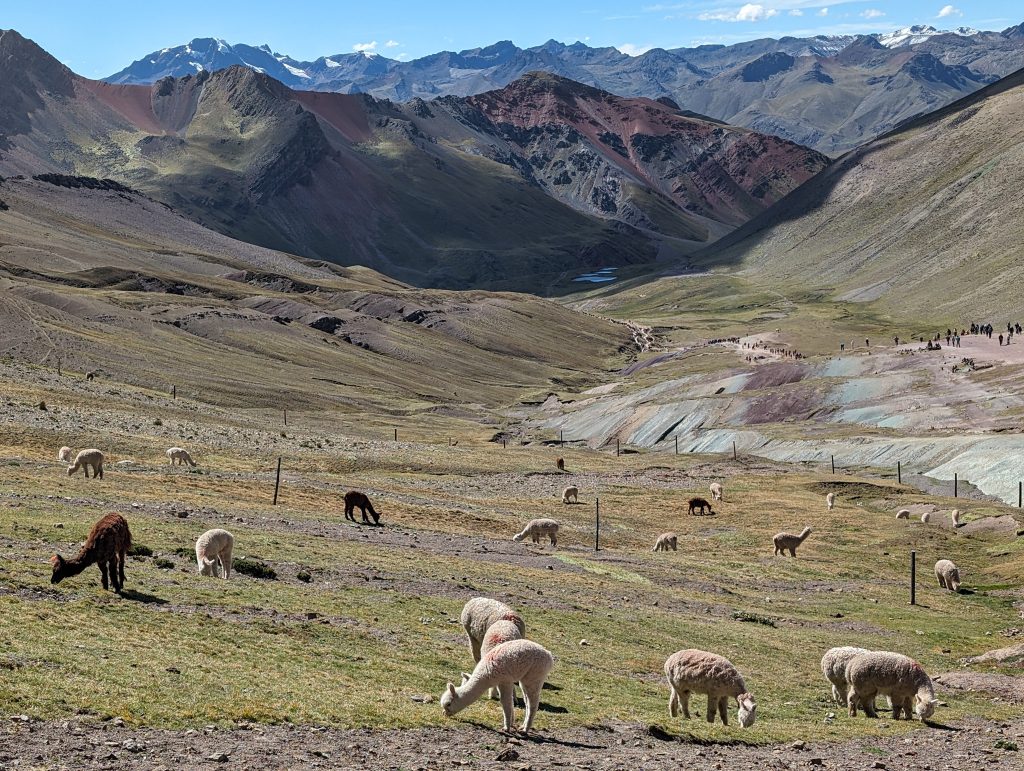
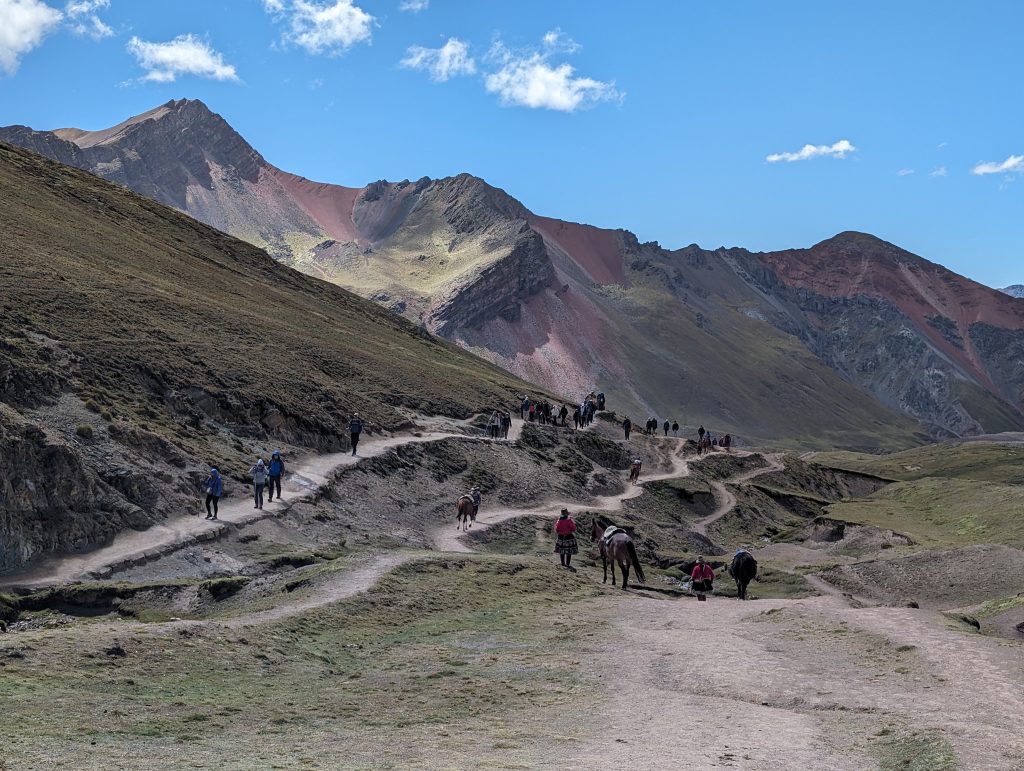
As we walked down the mountain, we could tell what a great decision we’d made by arriving early as groups of tourists streamed up the mountain. It was already getting crowded at the top when we started our descent. I can’t imagine what the rest of the heart of the day was like.

Our guide took us for an early lunch (at yet another Peruvian tourist buffet, but this one was particularly good) and we returned to Cusco. It was a great final experience for our time in Peru.
The Sacred Valley and the Rainbow Mountain are the two most popular day trips from Cusco (besides Machu Picchu, which is often done over two days or more) and it was easy to see why. We really enjoyed both of them.